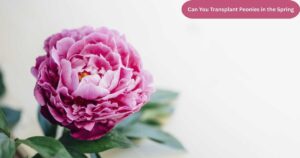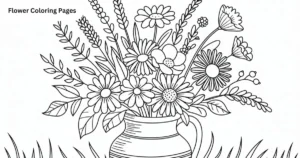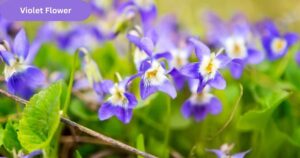The bleeding heart flower is one of nature’s most captivating blooms, known for its delicate, heart-shaped petals. These charming flowers have been cherished in gardens for centuries due to their romantic appearance and easy maintenance.
Their elegant form and vivid colors make them a favorite among both seasoned gardeners and beginners. With a few simple tips, you can enjoy their beauty in your own garden throughout the spring and early summer.
Unique Appearance of the Bleeding Heart Flower
The bleeding heart flower gets its name from its striking resemblance to a heart with a tiny drop below it. These blooms usually come in shades of pink, white, or red and hang gracefully from arching stems.
Each flower cluster consists of several drooping hearts, creating a cascading effect that is visually stunning. The plant’s lacy, green foliage adds a delicate backdrop to the bold colors of the blossoms.
Natural Habitat and Origin of the Plant
Bleeding hearts originally come from Asia, particularly China, Japan, and Korea. They thrive in temperate woodland areas, where they grow under the canopy of trees in moist, shaded soil.
These flowers were introduced to Western gardens in the 1800s and have remained popular ever since. Their ability to grow in cooler climates and shady spots makes them a reliable choice for many gardeners worldwide.
Best Conditions for Growing Bleeding Hearts
To grow bleeding hearts successfully, plant them in areas with partial to full shade. They prefer rich, well-drained soil with consistent moisture, which helps them produce healthy blooms.
These plants are ideal for shady garden borders or under trees where direct sunlight is limited. Although they can tolerate some sun, too much heat may cause the plant to wither or enter dormancy early.
When and How to Plant Bleeding Hearts
Spring or fall is the best time to plant bleeding heart roots or young plants. Make sure the soil is loose and enriched with compost or organic matter to support growth.
Plant the roots about two inches deep and space them 18 to 24 inches apart. Water thoroughly after planting and apply a layer of mulch to help retain moisture and suppress weeds.
Common Types of Bleeding Heart Flowers
There are several popular varieties of bleeding hearts that you can grow in your garden. The classic Dicentra spectabilis features large pink and white heart-shaped blooms on tall, arching stems.
Other notable types include Dicentra eximia and Dicentra formosa, which are more compact and better suited for rock gardens. Some hybrids offer unique color variations like pure white or deep red flowers.
How to Care for Bleeding Hearts
Once established, bleeding hearts require minimal care. Regular watering during dry spells and occasional feeding with balanced fertilizer will keep them healthy and thriving.
After blooming, the foliage may yellow and die back, which is a normal part of their life cycle. You can trim the dead leaves and allow the roots to rest until the next growing season.
Symbolism and Cultural Significance
The bleeding heart flower is often associated with love, compassion, and emotional healing. Its heart-shaped form makes it a popular symbol for romantic affection and heartfelt emotions.
In some cultures, it’s used to express unspoken love or remembrance of lost loved ones. Because of this symbolism, bleeding hearts are frequently included in meaningful garden designs or memorial spaces.
Pests and Diseases That Affect the Plant
Bleeding hearts are generally low-maintenance but can still face a few problems. Common pests include aphids and slugs, which can damage the foliage or flowers if not controlled.
Fungal issues like powdery mildew or root rot may appear in overly wet or poorly drained soil. Ensuring good air circulation and proper watering techniques will help prevent these problems.
Tips for Pairing Bleeding Hearts with Other Plants
Bleeding hearts look stunning when planted with other shade-loving perennials. Hostas, ferns, and astilbes are excellent companions that provide visual interest throughout the growing season.
These combinations help fill the space when the bleeding heart goes dormant in summer. Mixing textures and bloom times ensures your garden stays attractive from spring to fall.
Propagation and Division Methods
You can propagate bleeding hearts by dividing the root clumps or planting seeds. Division is usually done in early spring or fall when the plant is not actively blooming.
Carefully dig up the clump, split it into sections, and replant them in new locations. This not only helps multiply your plants but also rejuvenates older clumps for better growth.
Seasonal Changes and Dormancy
After their spring bloom, bleeding hearts enter a period of dormancy in midsummer. The leaves may yellow and die back completely, especially in warmer climates or full sun.
Don’t worry if the plant disappears for a while, as it will return next year with new growth. To maintain a neat appearance, you can remove the spent foliage and mark the area with a garden tag.
Fun Facts About Bleeding Heart Flowers
Bleeding hearts are not just beautiful but also attract butterflies and hummingbirds. Their bright colors and nectar-rich blooms make them a pollinator-friendly addition to any garden.
Despite their soft appearance, bleeding hearts are surprisingly hardy and can withstand cold winters. With the right care, they can bloom year after year in the same location without much fuss.
Read More: Flower Almond Tree
Conclusion
Bleeding heart flowers are a timeless addition to any garden, bringing beauty, elegance, and symbolism to shaded spaces. Their heart-shaped blooms and graceful arching stems make them stand out, especially in the spring season. Whether you’re a seasoned gardener or a beginner, these flowers are easy to grow and care for with just a little attention.
From their cultural meanings to their low-maintenance nature, bleeding hearts offer both charm and versatility. By choosing the right location and companions, you can enjoy their stunning display year after year. Add them to your garden for a touch of romance and natural grace.
FAQs
When do bleeding heart flowers bloom?
They typically bloom in spring and early summer.
Can bleeding hearts grow in full sun?
They prefer partial to full shade and may wilt in strong sun.
Are bleeding heart flowers toxic to pets?
Yes, they are toxic to cats, dogs, and horses if ingested.
How tall do bleeding heart plants grow?
Most varieties grow between 24 to 36 inches tall.
Do bleeding heart plants come back every year?
Yes, they are perennials and return each spring after dormancy.









